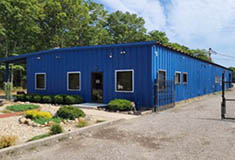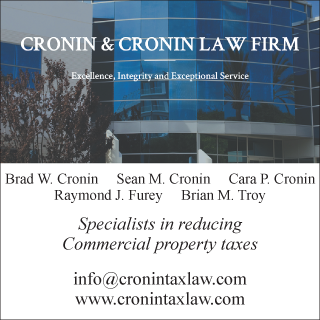Hunt Corp. Commercial Real Estate Q&A: Negotiation tactics for the seller - by David Hunt
 Q: We have received an offer on our 16,000 s/f industrial building. What are our next negotiating steps?
Q: We have received an offer on our 16,000 s/f industrial building. What are our next negotiating steps?
A: Fundamental to any successful negotiation is thorough preparation—this is the work that needs to be done before a counter-offer is made. Entire books have been written about the art of negotiating, and you have not shared any of the details of your situation, so I can share only a few of the strategies that have helped me negotiate advantageous transactions for our clients.
First, any real estate negotiation has to be kept in the context of the market. Hopefully, your agent has given you a thorough background on the market in your geographical area and size range. As an example, the sale of a 50,000 s/f industrial building in your area has little relevance to your building, since it is only 16,000 s/f. Market data might tell you that buildings in your area, size range and condition are currently selling between $200 to $220 per s/f, which gives you a starting point in evaluating the offer that you have received.
Having occupied the building, you should be well aware of any costs that the buyer might have to incur to repair or renovate. From the buyer’s point of view, renovation or repair costs are simply adding to his acquisition cost, whether it is roof repair, HVAC replacement, or office modernization. So be realistic in anticipating the true market value of your building.
Next, I always look to the needs of the other side. It often seems like price is the only or major component of a real estate transaction, but I often find that the opposite is true. Perhaps timing, terms, or some other issue is more important to the buyer. Representing the seller, I once sold a building at what was perceived as a discounted price to the buyer. In reality, we were able to negotiate a short-term leaseback for the seller that was substantially below market, and more than made up for the “discount” in the sale price.
I always like to look at the marketplace to see what other buildings might be available to the buyer as a BATNA (negotiation parlance for, “Best Alternative To a Negotiated Settlement.”) If I have a lot of competition, then I will have to be aggressive to make the deal. If I am the only game in town, I have a more likely chance of negotiating a deal close to my asking price.
In the end, the seller always has to weigh the offer in hand against the probability of a higher offer, and when that offer will come in. As an example, I was once responsible for the sale of my elderly parents’ house on Long Island. I calculated the cost to carry the house, including taxes, utilities, and maintenance contracts. Then I added the lost investment revenue that the house proceeds would earn if properly invested. Every month the house remained on the market would cost my parents over $5,000 a month! In the sluggish market I was experiencing at the time, it was an easy decision to take an offer that was $10,000 below the market.
Probably nothing is more predictive of a successful negotiation than preparation, knowledge and analysis. The time required in this phase of negotiations will be well spent, and is always the place to start.
Do you have a question regarding commercial real estate? Email your question to Commercial Real Estate Q & A, at [email protected] for possible inclusion in a future column.
David Hunt, MCR, CCIM, SIOR is the president of Hunt Corporate Services, Inc., Plainview, N.Y.
Suffolk County IDA supports expansion of A&Z Pharmaceuticals


The evolving relationship of environmental consultants and the lending community - by Chuck Merritt
When Environmental Site Assessments (ESA) were first part of commercial real estate risk management, it was the lenders driving this requirement. When a borrower wanted a loan on a property, banks would utilize a list of “Approved Consultants” to order the report on both refinances and purchases.







.gif)
.jpg)